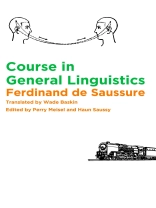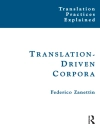The founder of modern linguistics, Ferdinand de Saussure inaugurated semiology, structuralism, and deconstruction and made possible the work of Jacques Derrida, Roland Barthes, Michel Foucault, and Jacques Lacan, thus enabling the development of French feminism, gender studies, New Historicism, and postcolonialism. Based on Saussure’s lectures, Course in General Linguistics (1916) traces the rise and fall of the historical linguistics in which Saussure was trained, the synchronic or structural linguistics with which he replaced it, and the new look of diachronic linguistics that followed this change. Most important, Saussure presents the principles of a new linguistic science that includes the invention of semiology, or the theory of the ‘signifier, ‘ the ‘signified, ‘ and the ‘sign’ that they combine to produce.
This is the first critical edition of Course in General Linguistics to appear in English and restores Wade Baskin’s original translation of 1959, in which the terms ‘signifier’ and ‘signified’ are introduced into English in this precise way. Baskin renders Saussure clearly and accessibly, allowing readers to experience his shift of the theory of reference from mimesis to performance and his expansion of poetics to include all media, including the life sciences and environmentalism. An introduction situates Saussure within the history of ideas and describes the history of scholarship that made Course in General Linguistics legendary. New endnotes enlarge Saussure’s contexts to include literary criticism, cultural studies, and philosophy.
Tabla de materias
Editors’ Preface and Acknowledgments
Textual Note
Introduction: Saussure and His Contexts
Course in General Linguistics
Translator’s Introduction
Preface to the First Edition
Introduction
Chapter I. A Glance at the History of Linguistics
Chapter II. Subject Matter and Scope of Linguistics; Its Relations with Other Sciences
Chapter III. The Object of Linguistics
Chapter IV. Linguistics of Language and Linguists of Speaking
Chapter V. Internal and External Elements of Language
Chapter VI. Graphic Representation of Language
Chapter VII. Phonology
Appendix: Principles of Phonology
Chapter I. Phonological Species
Chapter II. Phonemes in the Spoken Chain
Part One: General Principles
Chapter I. Nature of the Linguistic Sign
Chapter II. Immutability and Mutability of the Sign
Chapter III. Static and Evolutionary Linguistics
Part Two: Synchronic Linguistics
Chapter I. Generalities
Chapter II. The Concrete Entities of Language
Chapter III. Identities, Realities, Values
Chapter IV. Linguistic Value
Chapter V. Syntagmatic and Associative Relations
Chapter VI. Mechanism of Language
Chapter VII. Grammar and Its Subdivisions
Chapter VIII. Role of Abstract Entities in Grammar
Part Three: Diachronic Linguistics
Chapter I. Generalities
Chapter II. Phonetic Changes
Chapter III. Grammatical Consequences of Phonetic Evolution
Chapter IV. Analogy
Chapter V. Analogy and Evolution
Chapter VI. Folk Etymology
Chapter VII. Agglutination
Chapter VIII. Diachronic Unites, Identities, and Realities
Appendices to Parts Three and Four
Part Four: Geographical Linguistics
Chapter I. Concerning the Diversity of Languages
Chapter II. Complication of Geographical Diversity
Chapter III. Causes of Geographical Diversity
Chapter IV. Spread of Linguistic Waves
Part Five: Concerning Retrospective Linguistics
Chapter I. The Two Perspectives of Diachronic Linguistics
Chapter II. The Oldest Language at the Prototype
Chapter III. Reconstructions
Chapter IV. The Contribution of Language to Anthropology and Prehistory
Chapter V. Language Families and Linguistic Types
Errata
Notes
Works Cited
Index
Sobre el autor
Haun Saussy, born in 1960, is University Professor at the University of Chicago, where his courses range among classical Chinese literature, comparative poetics, translation, and the history of knowledge. His books include The Problem of a Chinese Aesthetic (1993), Great Walls of Discourse (2001), The Ethnography of Rhythm (2016), and Translation as Citation (2018) for which he received the American Comparative Literature Association’s Wellek Prize in 2018.












